The Story of the White Pass & Yukon Route has been told many times, but the stories of its locomotives has never been put down in print, at least not in a way that one can go to find the necessary information regarding a particular locomotive of the line. Several of the early locomotives have histories with holes where conjecture fills in. Other locomotive histories were quite concise, and several of the locomotives have survived for nearly 140 years. This is the third article in my series about the early locomotives of the famed White Pass & Yukon Route. Part 1 was in the March/April issue and covered the first two locomotives of the line, one of which was the first locomotive in the Alaska territory. Part 2 was in the May/June issue and covered locomotive number 3/53 and its connection with the Denver & Rio Grande. This time I will discuss two locomotives: the oldest locomotive to ever operate on the White Pass and the youngest, or newest locomotive (at the time that it was acquired) on the railroad.
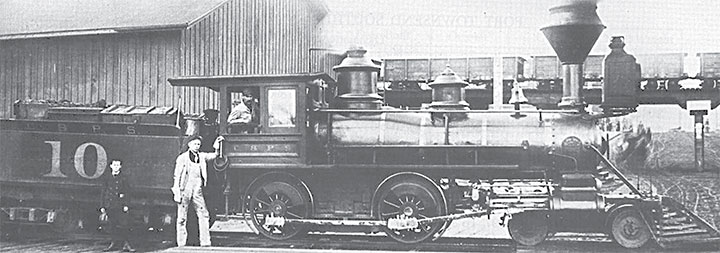
-Unknown photographer, Bruce Pryor collection.
Western Washington State was trying to grow in the 1870s. In particular was Olympia, a town in Thurston County southwest of Tacoma. The town started trying to get a railroad interested in connecting them with the Northern Pacific at Tenino, Washington, yet in 1873, was not able to attract one. A prominent citizen of the town, Esdras N. Ouimette, was finally able to organize the Thurston County Railroad Construction Company in 1878. A new 3-foot gauge 4-4-0 was built to order by the Baldwin Locomotive Works of Philadelphia, Pennsylvania, in March of that year and shipped. The locomotive had 12- x 16-inch cylinders, 42-inch-diameter drivers, and produced 6,800 pounds of tractive effort. The locomotive arrived in May lettered for the Olympia & Tenino R.R. #1 and named the E.N. OUIMETTE. The line was officially opened on August 1, 1878. On that day, the locomotive pulled a train consisting of one passenger car, three flatcars, and one boxcar, carrying 350 passengers the fifteen miles from Olympia to Tenino in an hour and a half. The long travel time was due to a protester riding a horse on the tracks in front of the train. The name was changed in August 1881 to the Olympia & Chehalis Valley R.R. (O&CV). In 1887, the line came under the control of the Oregon Improvement Company (OIC) and the trim 4-4-0 was sold or transferred to the OIC’s Columbia & Puget Sound R.R. (C&PS) in 1890. The C&PS renumbered the locomotive #10 and the engine worked the line until the railroad was standard gauged in 1897, and the locomotive was put up for sale.
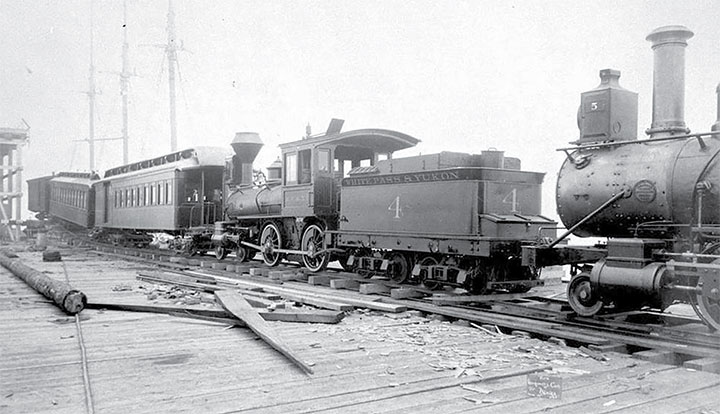
-Unknown photographer, Bruce Pryor collection.
July 1898 saw the start of construction on the White Pass & Yukon Route in southeast Alaska. The Pacific Contract Company (PCC) was the construction company hired by the WP&YR to build the railway and it was looking for motive power. All rail equipment would become property of the WP&YR when the construction was completed. The PCC found several locomotives for sale a mere nine-hundred miles away in Washington State, which is relatively close by Alaskan standards. The ex-C&PS #10 arrived in Skagway, Alaska, on September 1st, 1898, now lettered WP&YR #4. The little 4-4-0 was renumbered to #54 in 1900 and doesn’t appear to have changed much over the years since she was on the C&PS, except for the addition of an air pump and an air tank under the cab. She hauled short trains and was used as a helper on longer trains until 1905 when she was sold to the Tanana Mines Railroad (TMR). The 4/54 was the oldest locomotive ever to operate on the WP&YR.
The Tanana Mines R.R. was the brainchild of Falcon Joslin and his team, who were financial partners with the British firm Close Brothers, the same early financial backers of the White Pass & Yukon Route. Construction started in 1905 of the TMR to access the mines near what is now Fairbanks, Alaska. The TMR acquired WP&YR #54 that same year, renumbered her #50 and put her to work hauling freight and passengers. The TMR was reorganized and renamed the Tanana Valley R.R. (TVRR) when Close Brothers were bought out in 1907, but #50 remained #50. The TVRR had several profitable years, but that was not to last and the TVRR was bankrupt by 1917.
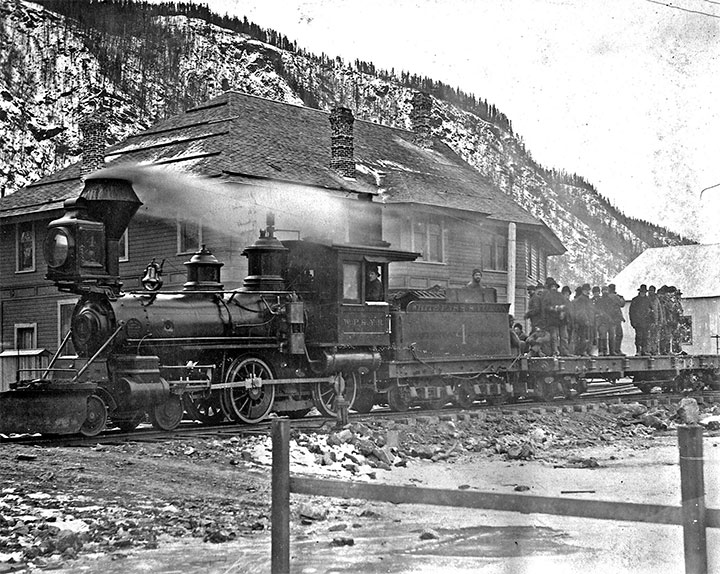
-Unknown photographer, National Park Service, Klondike Gold Rush National Historical Park (KLGO), Rapuzzi collection.
The Alaska Engineering Commission (AEC) had been formed to build a government owned standard gauge railroad from the coast to the interior of Alaska in 1914. The federal government bought the TVRR in 1917 and the AEC upgraded the line and operated it as a narrow gauge branch with the equipment relettered to reflect the Alaska Engineering Commission Railroad. In 1923, the railroad that had been built and operated by the AEC was considered complete, and officially became the Alaska Railroad. The narrow gauge branch was closed on August 1, 1930, and the once beautiful 4-4-0, now 52 years old, was subsequently scrapped.
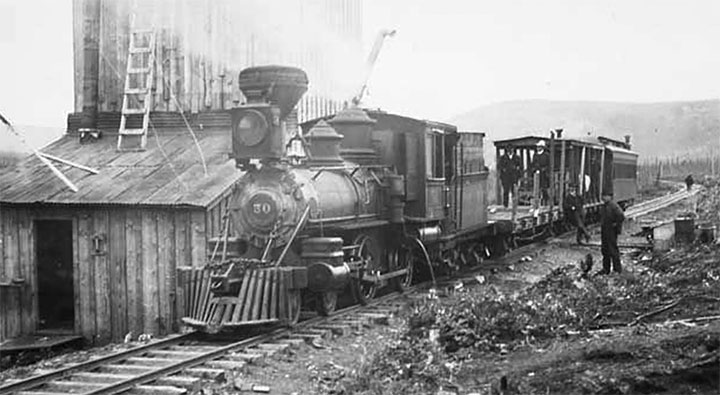
-Unknown photographer, Bruce Pryor collection.
The Columbia & Puget Sound (C&PS) had begun as the 3-foot gauge Seattle & Walla Walla R.R. & Transportation Company (S&WW) in 1873. The Oregon Improvement Company bought the S&WW in 1880, changed the name to C&PS and went about upgrading the railroad. In 1885, the C&PS received a brand new 2-8-0 locomotive from Baldwin Locomotive Works numbered 8. This locomotive was the next evolution of the famed class 60 (C-16 class) locomotives of the Denver & Rio Grande. She had 15- x 18-inch cylinders, 36½-inch-diameter drivers, and 15,100 pounds of tractive effort. The C&PS line was standard gauged twelve years later in 1897 and the locomotive was put up for sale.
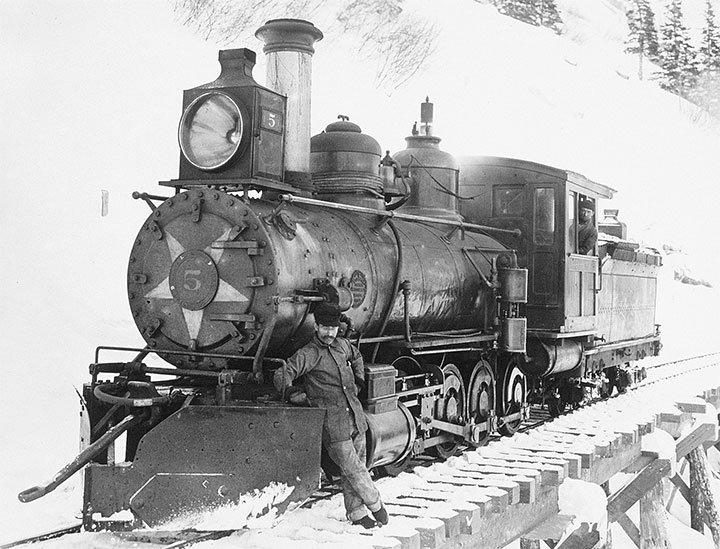
-Photo by E.A. Hegg, Bruce Pryor collection.
As stated earlier, the White Pass was looking for motive power and bought five engines from the C&PS in 1898, the C&PS #8 being the fifth. WP&YR numbers 1 & 2 arrived in July (see Part 1 in the March/April issue), #3 arrived sometime between late July and the end of August (see Part 2), #5 arrived on September 1st, 1898, along with #4. Number 5 was the youngest, or newest, locomotive at the time and was put to work like the other four, bucking snow, hauling trains, and moving materials for the construction of the railroad. The WP&YR renumbered the 5 to 55 in 1900, and by this time had already received two brand new and bigger engines from Baldwin in 1899.
The railroad would receive four more bigger and more capable locomotives in 1900. The 5/55, which could only handle three loaded cars up the 3.9 percent grade, was consequently put up for sale, and it was sold to the Klondike Mines Railway (KMR) of Dawson City, Yukon Territory, in August of 1905, as KMR #2.
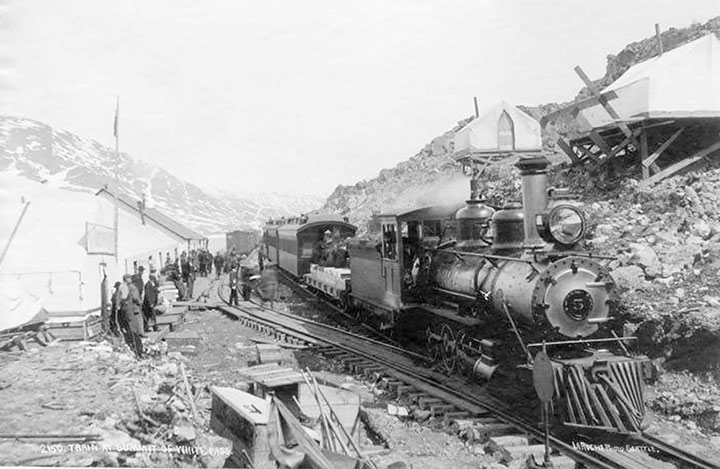
-Photo by LaRoche, Bruce Pryor collection.
Dawson City and Klondike City are some 330 miles north of Whitehorse, Yukon Territory, and situated at the confluence of the Klondike and Yukon Rivers and were the nearest settlements to the gold fields of the Klondike, some twenty miles away. Due to the typical transportation difficulties of the far north, a railway to the gold fields seemed the answer. The Klondike Mines Railway was chartered in 1899. Even as gold production peaked, the KMR had a rough time getting financing for the project. It took until August of 1905 before funding was available and rails laid, rolling stock and locomotive #2 purchased. KMR #2 arrived from Whitehorse, Yukon Territory, on the barge Pelly, pushed by the steamer Canadian, on August 9th. However, construction had again stalled due to various injunctions, so #2 sat through the winter unused.
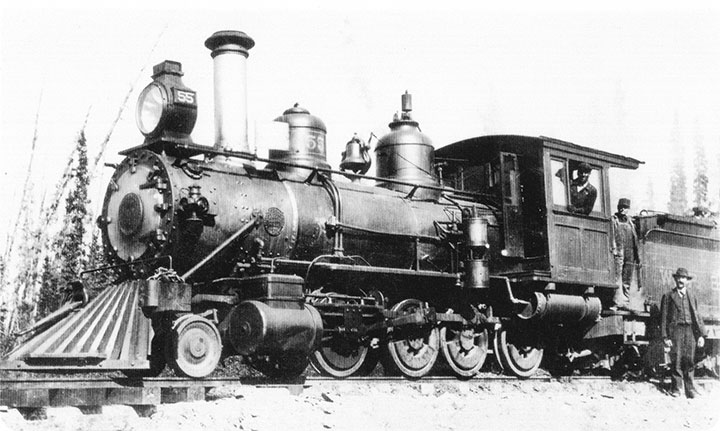
-Unknown photographer, Rob Bell collection.
May of 1906 saw KMR #2 go to work as construction of the line resumed, and by the fall of that year #2 was hauling revenue trains. Over the winter of 1906-1907, #2 was rebuilt by the shop crew and received the much larger tender from locomotive #3, (when the KMR started using #3, the tenders were swapped again). Number 2 was the most used locomotive on the KMR roster throughout the short, seasonal life of the line. The 1912 and 1913 seasons saw the KMR operate 24 hours a day hauling freight only (mostly cordwood for steam powered thawing plants). However, when the last trains pulled into Klondike City in late October of 1913, thus seeing all four of the KMR engines parked in the engine house, it would be 29 years before any of the wheels would move again. All of the assets of the KMR came under control of the Yukon Consolidated Gold Corporation (YCGC) about 1925. Forty-eight years after they were parked in the engine house in Klondike City, #2 was donated to the Dawson City Museum by YCGC in 1961 and was moved to Minto Park in Dawson City. By 1991, the locomotive and her sisters were housed under a shelter and still reside there today.
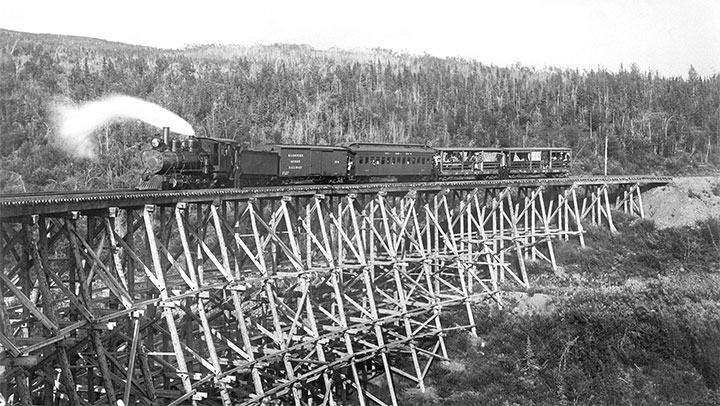
-Photo by E.O. Ellingsen, NA1466-33, Courtesy of Archives and Special Collections, University of Calgary.
It is fitting these two locomotives that arrived together in Skagway, Alaska, are covered here. At the time of their arrival on the White Pass, the oldest and youngest had plenty of usefulness left. They worked two railroads together before going their separate ways. While neither lasted long on the White Pass, they did serve well in the far north, and one survives on display today.
Again, thank you to Boerries Burkhardt, David Fletcher, Robert Hilton, Chuck Morse, Bruce Pryor, and John Stutz for their assistance, insight, photos, and information. Without their help, the histories of these locomotives would be lost. In the next issue I will explore the histories of two unique locomotives the White Pass & Yukon Route bought new from Baldwin accompanied by another of David Fletcher’s drawings.